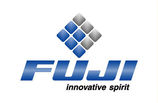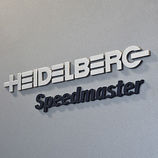Online support HOTLINE: 84-2439437063
|
HOW RECYCLABLE ARE YOUR DIGITAL PRINTS?(01/12/2015)
Digital printing technologies are gaining a growing share of the market, but the deinkability of these prints could turn out to be a threat to today's recycling system. Printed matter needs deinking before recycling, but some digital printing methods produce prints that are tricky to process. Tricky but not impossible. Most deinking technologies are for conventional oil-based inks. The standard deinking methods reflect the traditional print mix but the rise of digital printing suggests it might be time for new approaches. Change is inevitable, and new ink chemistries and substrates will disrupt the established hegemony. As the printing industry produces more and more varied digital prints for applications ranging from commercial print and books, through to signage and textiles, deinking technologies must keep pace. The deinking problem mainly applies to copies printed with flexo inks, inkjet and some liquid toners, but not all. Prints printed with Xeikon toners, for example, can be deinked using conventional deinking technologies. The fact is that the volume of materials produced with print methods - that cannot be deinked using standard methods is rising and will continue to do so. Digital printing methods are steadily and relentless encroaching on traditional printing sectors, from packaging through to sign and display work. Integrated mills need to invest in suitable deinking methods, or face competition from innovators with more imagination and vision. The market for pulp and paper chemicals worldwide could reach $20 billion by the end of 2015. In North America alone, pulp and paper chemical demand is expected to increase to $4.8 billion in 2015. So this is a market ripe for disruption. One particularly interesting technology for deinking prints is to use enzymes rather than conventional chemistries. Enzymes can be produced biologically from renewable resources. Their use reduces the need for chemicals, lowers the deinking process cost, and uses less energy so enzymatic deinking more environmentally friendly. Enzymatic deinking can also produce stronger papers. Print buyers and printing companies investing in new print technologies want a vibrant digital printing industry, so such developments are good news. Digital printing is environmentally friendly in that it reduces print waste volumes and has collapsed prepress supply chains. But how can print buyers make environmentally informed decisions about the print method they use to produce their projects? Printers and print buyers can select print methods by the print’s deinkability, an indicator of its recyclability and suitability for subsequent use as a raw material. Digital press manufacturers are working hard to ensure the deinkability of the prints their presses produce, so, as ink, substrate and deinking technologies evolve, we can only expect this to get better. Other news
|
HTML Code









